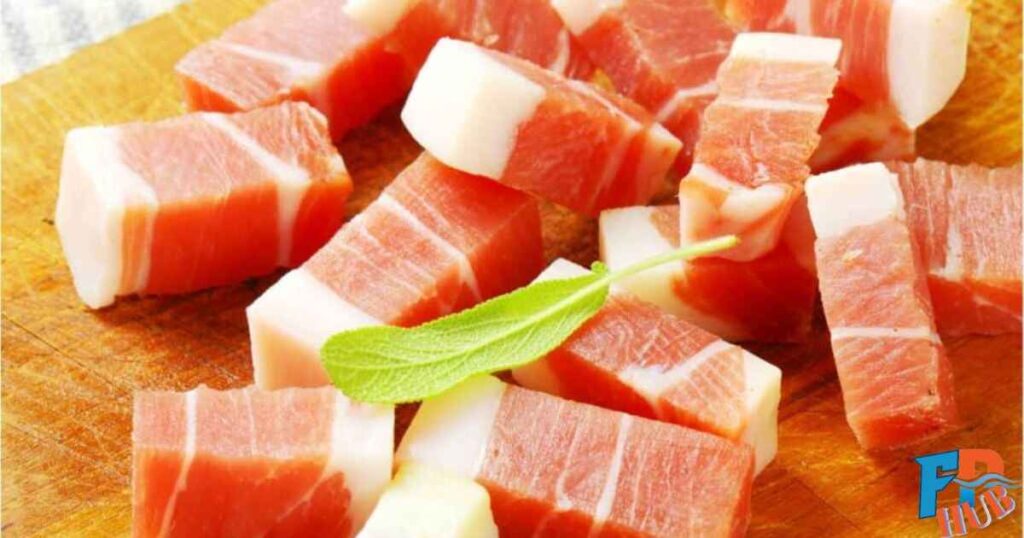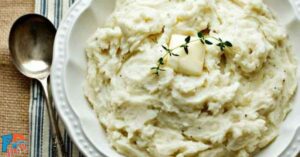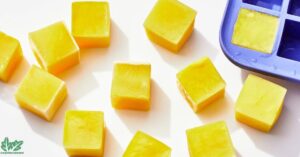Making authentic Italian pizza at home can be frustrating. Store-bought pizzas lack the distinct flavors and textures of true Italian cuisine, while many homemade attempts fall short of restaurant quality. The combination of ingredients, techniques, and timing needs to be precise.
Enter speck pizza – a masterpiece from Northern Italy that transforms ordinary homemade pizza into an exceptional dish. This guide provides proven techniques for creating restaurant-quality speck pizza at home.
You’ll learn the essential components: from selecting premium speck and cheese to mastering the perfect dough and achieving ideal baking temperature. These methods ensure consistent, professional results every time.
What is Speck and How is It Made?

Speck stands as a cornerstone of Northern Italian cuisine, particularly from the Alto Adige region. This premium cured meat dates back to the 13th century when Alpine communities developed preservation techniques for their pork.
Understanding Speck: The Premium Italian Cured Meat
Speck differs significantly from other Italian cured meats through its distinct smoking process. It starts with premium pork leg, carefully selected for its perfect balance of lean meat and fat.
Unlike prosciutto, which relies solely on salt curing, speck undergoes both curing and cold smoking. This dual process creates its signature deep red color and marbled appearance. The meat develops complex flavors from a precise blend of spices including juniper, bay leaves, and black pepper. Today, authentic speck carries the Protected Geographical Indication (PGI) status, ensuring traditional production methods.
The Traditional Curing Process
The creation of speck follows a meticulous 5-month journey. First, butchers debone fresh pork legs and trim them to the traditional rectangular shape. The meat then receives a coating of the specialty spice mixture and sea salt. For 3 weeks, it cures in temperature-controlled rooms at 39°F (4°C). Next comes the distinctive cold smoking phase, using beechwood at temperatures below 68°F (20°C). This continues intermittently for 2-3 weeks. Finally, the speck ages for several months in well-ventilated rooms, developing its characteristic flavor and texture.
Classic Speck Pizza Variations
The versatility of speck has inspired diverse pizza styles across Italy since the 1950s. These variations showcase both traditional and innovative approaches to pizza making.
White Base Speck Pizza
The white base speck pizza emerged in the 1970s in Northern Italy. This version skips tomato sauce in favor of a rich, creamy base. The foundation typically combines sour cream or crème fraîche with aged cheese and garlic.
This creates a smooth, luxurious canvas that complements speck’s smoky flavors. The absence of acidic tomato sauce allows the subtle nuances of the cured meat to shine through. Modern variations might include caramelized onions or truffle oil for added depth.
Traditional Tomato Base Speck Pizza

The classic tomato-based speck pizza represents traditional Italian pizza craftsmanship. It starts with a layer of San Marzano tomato sauce, known for its sweet-tart balance. Fresh mozzarella creates the essential creamy layer.
The speck gets added in the final minutes of baking or just after, preserving its delicate texture and preventing it from becoming tough. This method, developed in the pizzerias of South Tyrol, ensures each ingredient maintains its distinct character while creating a harmonious whole.
Essential Ingredients
The foundation of an exceptional speck pizza lies in selecting premium ingredients. Each component plays a vital role in creating the perfect balance of flavors.
Pizza Dough Components
The perfect pizza dough requires just five essential ingredients: high-protein flour (00 grade), active dry yeast, pure water, sea salt, and extra virgin olive oil. Each ingredient serves a specific purpose. The 00 flour provides structure and elasticity. Fresh active dry yeast ensures proper fermentation and rise. Pure water at room temperature activates the yeast effectively. Sea salt enhances flavor and controls fermentation. Extra virgin olive oil adds tenderness and prevents sticking. The ratio matters: use 1000g flour, 650ml water, 20g salt, 20ml oil, and 3g yeast for two large pizzas.
Choosing the Right Cheese
Italian cheese selection dramatically impacts your speck pizza’s character. Fontal cheese leads the way with its superior melting properties and mild flavor that complements speck.
Authentic Italian Fontal ages for 60 days, developing a smooth, slightly sweet profile. Alternative options include fresh mozzarella for traditional recipes, or Gruyere for an Alpine twist. For white base pizzas, combine two cheeses: a melting cheese (Fontal/mozzarella) and a flavor cheese (Parmigiano-Reggiano/Pecorino).
Mushroom and Additional Toppings
Chestnut mushrooms emerge as the ideal companion for speck pizza. Their firm texture and earthy flavor perfectly balance speck’s smokiness. Slice them thinly at 1/8 inch for even cooking. Additional complementary toppings include caramelized onions, fresh arugula (added post-baking), and whole garlic cloves (roasted). Maintain restraint with toppings – excess moisture can compromise the crust’s crispiness.
Step-by-Step Pizza Making Process
The assembly process requires careful attention to timing and technique. Follow these proven methods for professional results.
Preparing the Perfect Pizza Dough
Begin with room temperature ingredients. Mix dry ingredients first, then add water slowly while kneading. Knead for exactly 10 minutes until smooth and elastic. Let rise for 2 hours at 75°F (24°C). Divide and shape into balls.
Allow second rise for 45 minutes. Roll to 1/8 inch thickness using minimal flour. Create a slightly thicker edge for a proper crust. Test proper development by stretching – dough should form a translucent “window” without tearing.
Creating the Base Sauce
For red sauce, blend whole San Marzano tomatoes with salt and fresh basil. Cook briefly to maintain freshness. White sauce combines heavy cream, garlic, and Parmigiano-Reggiano.
Simmer until thickened. Use 4-5 tablespoons per pizza – excess sauce creates soggy crust. Apply sauce in spiral motion from center outward, leaving 1/2 inch border. Temperature matters: red sauce at room temperature, white sauce slightly warm for even spreading.
Topping Application Technique
Layer ingredients strategically for optimal cooking. Start with a light cheese layer to protect the sauce. Add mushrooms next, spaced evenly for consistent cooking. Apply remaining cheese in small clusters. Add speck only in the final 2-3 minutes of baking or immediately after. This preserves its delicate texture and prevents excessive salt concentration. For white pizzas, drizzle olive oil last. Follow the “less is more” principle – overcrowding prevents proper crust development.
Baking Instructions
Perfect baking transforms good ingredients into an exceptional speck pizza. The right temperature and timing are crucial for professional results.
Oven Preparation and Temperature
Start by preheating your oven to its maximum temperature (ideally 500°F/260°C) for 30 minutes. Place a pizza stone or heavy baking sheet on the middle rack during preheating. For convection ovens, reduce temperature by 25°F. Ensure proper ventilation as high temperatures create steam.
The oven’s heat distribution affects crust development. Create steam by placing a small pan of water on the bottom rack. This helps achieve the perfect crust texture. Test temperature by sprinkling flour on the stone – it should brown slowly, not burn.
Timing and Techniques
A perfectly baked speck pizza takes 8-12 minutes depending on temperature and thickness. Watch for these signs: the crust edge turns golden brown, cheese bubbles completely, and the bottom shows light charring.
Rotate the pizza halfway through for even cooking. Add speck during the final 2 minutes. Remove when the crust’s bottom shows leopard-spotting pattern. Let rest 2 minutes before cutting to allow cheese to set.
Expert Tips and Tricks
Professional expertise elevates your pizza from good to extraordinary. Learn from years of pizzaiolo experience.
Common Mistakes to Avoid
Cold dough creates tough crust – always bring to room temperature. Never press out dough with rolling pin – it destroys air pockets. Avoid overloading toppings – less is more. Don’t rush preheating – proper temperature is essential. Skip dough stretching when cold – it springs back. Never use pre-shredded cheese – it contains anti-caking agents. Don’t cut pizza immediately – cheese will slide off.
Professional Chef Recommendations
Use ’00’ flour for authentic texture. Ferment dough slowly in refrigerator for 24-72 hours. Brush crust edge with olive oil before baking. Keep toppings at room temperature. Use cooking thermometer to verify oven temperature. Position rack in upper third of oven. Test dough elasticity by stretching – it should form translucent membrane.
Serving and Storage
Proper presentation and storage maintain the pizza’s quality and extend its enjoyment.
Presentation Tips
Serve on preheated ceramic plates to maintain temperature. Cut with a rolling cutter in one smooth motion. Garnish with fresh basil leaves and olive oil drizzle. Place uncut speck pieces strategically. Add fresh arugula after baking. Serve immediately while cheese is perfectly melted. Present whole pizza briefly before cutting for visual impact.
Storage and Reheating
Cool pizza completely before storing. Place in airtight container, separate layers with parchment paper. Refrigerate up to 3 days. Freeze uncooked dough balls up to 3 months. Reheat in 375°F oven for 10 minutes on preheated stone. Never microwave – it makes crust tough. Remove speck before reheating and add fresh after warming.
Nutritional Information
Here’s the comprehensive breakdown per standard serving (1/8 of 12-inch pizza):
| Nutrient | Amount |
| Calories | 285 |
| Protein | 12g |
| Carbohydrates | 35g |
| Fat | 11g |
| Fiber | 2g |
| Sodium | 680mg |
| Iron | 2.5mg |
| Calcium | 185mg |
Values may vary based on specific ingredients and portions used. This analysis assumes standard recipe with moderate cheese and toppings.
Frequently Asked Question
What makes speck different from prosciutto?
Speck undergoes both curing and cold smoking, while prosciutto is only salt-cured. Speck has a distinctive smoky flavor and rectangular shape. It’s made from deboned pork leg, seasoned with juniper, bay leaves, and black pepper. The smoking process gives speck a darker color and firmer texture than prosciutto.
Can I make speck pizza without a pizza stone?
Yes! Use a heavy baking sheet or cast iron pan, preheated in the oven. Place parchment paper on the heated surface before adding pizza. An inverted baking sheet works well too. While stones provide optimal results, these alternatives produce good crusts.
What’s the best cheese substitute for Fontal? Gruyere offers similar melting properties and nutty flavor. Mild provolone or young Gouda work well too. Fresh mozzarella combined with Parmigiano-Reggiano creates a comparable taste and texture. Avoid aged cheeses alone as they don’t melt properly.
How long does speck pizza keep in the refrigerator?
Properly stored speck pizza lasts 3-4 days in the refrigerator. Store in airtight containers or wrap tightly in aluminum foil. Keep layers separated with parchment paper. For best quality, consume within 2 days.
Can I freeze speck pizza?
Yes, speck pizza freezes well for up to 2 months. Cool completely before freezing. Wrap individual slices in plastic wrap, then foil. Store in freezer bags with air removed. Thaw in refrigerator overnight and reheat in oven at 375°F for best results.
Conclusion
Creating the perfect speck pizza combines tradition with technique. This guide provides essential knowledge for crafting authentic Italian pizzas at home. From selecting premium ingredients to mastering baking methods, every step contributes to exceptional results.
Remember that practice improves skill – don’t be discouraged by initial attempts. Start with basic recipes and gradually experiment with variations.
The reward is a professional-quality pizza that brings the taste of Northern Italy to your table. Share these creations with friends and family to spread the joy of authentic Italian cooking.











